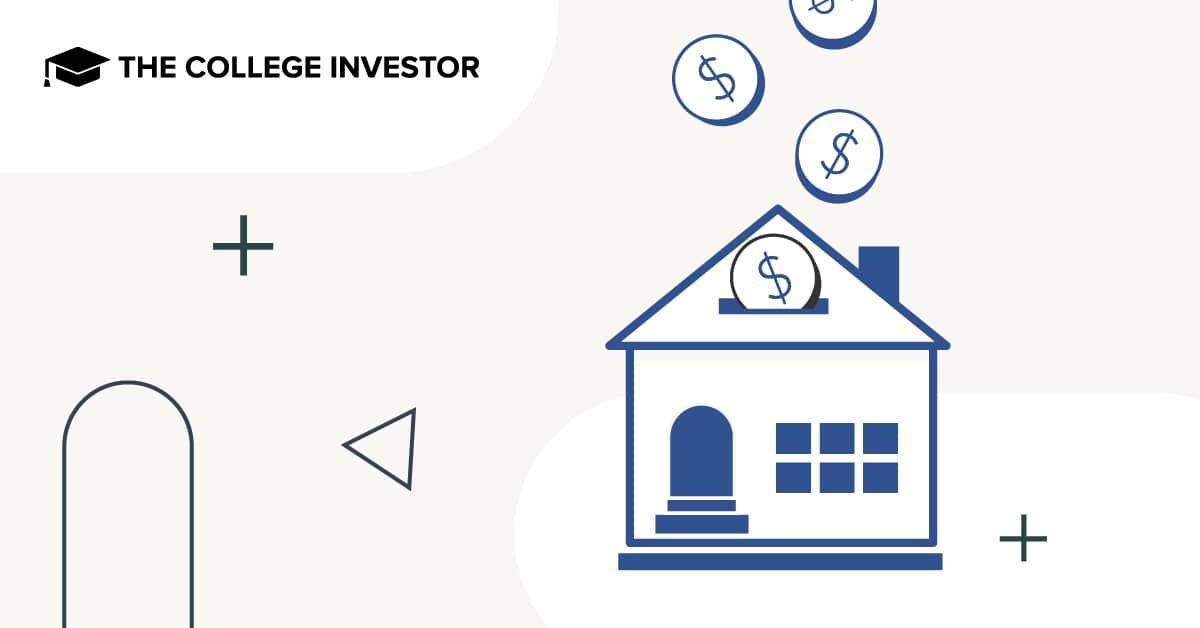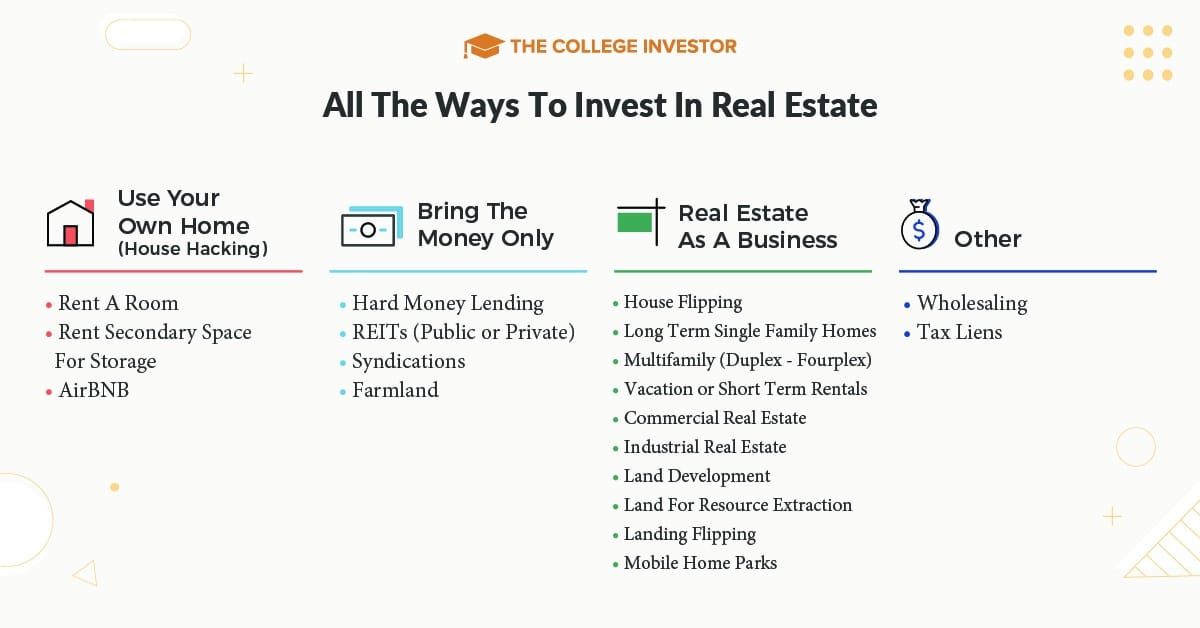
Real estate has traditionally been one of the most sought after investment vehicles for its passive income potential, appreciation, positive cash-flow, and tax reducing deductions.
However, real estate investing is also viewed as one of the more difficult investments to start due to the high risk and high up-front costs required to start. I want to break that myth and show you the exact steps that I am taking to become a real estate mogul with low up-front costs.
The First Purchase
Your first real estate purchase will always be the most difficult. As I lay out my plan, you’ll see that each subsequent builds off of the first, and each subsequent purchase becomes easier as your cash flow improves and you refine your systems. But getting the first piece of real estate can be tricky. My suggestion is to start with a modest priced single family home and live in it yourself while you aggressively pay down the mortgage.
For example, you purchase a 3 bedroom, 2 bath, 1,600 square foot home in a decent area of your town for $100,000 (Don’t laugh, this exists in MANY areas of the county). You utilize a lender like Bank of America’s new ‘No PMI’ mortgage program or SoFi, and take out a mortgage with a 10% down payment, respectable 4% interest rate and no PMI. With taxes and insurance included, you will owe $541 per month. Now the fun begins.
Once you take ownership of this home and move in to make it ‘Owner Occupied’, you will begin paying down your mortgage as much as possible. Use your tax refund checks, bonuses, side hustle income, etc to get the mortgage balance down as low as possible.
Your goal is to pay the mortgage down so you reach at a maximum 70% loan to value (LTV). This means that if the house is valued at $100,000, you will only owe $70,000 on the home, giving you a 70% loan to value ratio. What this means for you, and more importantly for the bank offering you financing, is that you could now qualify for a cash out refinance.
Once you reach your 70% LTV, you can refinance your home back to the original 90% LTV and ‘cash out” your home’s equity meaning you will walk away from the refinance with a $20,000 check in hand. Your monthly payment won’t change, and could potentially even be lower if you can secure a better interest rate.
Second and Third Purchase
With your $20,000 cash in hand you have a few options. If you don’t like the house you currently live in, you can replicate Step 1, move into a new house, and rent out the one you already own. Or you can continue to live in the existing home you own and purchase 2 new homes as rentals. To get on the fast track of becoming a real estate mogul, let’s explore the option of remaining in the existing home and purchasing two new single family homes as rentals.
If we look to purchase homes similar to our above example, that $20,000 will let us purchase two single family residences each with a $541 monthly payment. However, now that these homes will be treated as an investment, the tax rate increases to 6%, so your monthly payment will jump to $600 each.
The beauty of this model is that now you can rent out both of these homes, with average rental rates in most areas at $1,100. This gives you a positive cash flow of $500 each month per house. Of course you will want to save a portion of that income to build up an emergency fund for each house, but after saving $5,000 per house in an emergency fund, you will have an additional $1,000 per month in positive cash flow that you can use to build up your down payment for the next home.
The Mogul Road
You can see where this path is headed. Now that you have two homes producing positive cash flow, you just have to wait until you build enough cash for your next down payment. Purchase house number 4, save up the initial emergency fund, and you will soon increase your monthly positive cash flow to $1,500.
With each additional house you purchase, you will decrease the amount of time it will take to save up the down payment for your next home. With 10 rental homes, each producing $500 monthly positive cash flow, you can save $10,000 for a down payment every 2 month, allowing you to reasonably purchase 6 new homes per year. At this point, the sky is the limit, but you will need to ensure you begin building your team to assist you in your growing empire.

Building Your Team and Securing Your Future
Managing 3-5 rental homes by yourself will require a lot of patience, frustration, manual labor, and stress. However, it can be done if you are willing to put in the time and energy required. However, once you have acquired 5 rental homes, the amount of time required to manage your properties will be beyond what you are individually capable of. At this point, to scale your business, you will need to begin assembling your team.
The first logical member of your team is a property manager. You can either hire this person, or hire an agency to manage it for you. Most property managers will take a percentage of the gross rental rate, so you will need to factor that into your monthly cash flow figures. But they generally pay for themselves as a property manager will manage the leasing and marketing of your property, rent collection, field phone calls from tenants, and schedule repairs and emergencies.
The second member of your team is a handyman or licensed contractor. All homes will break down, and depending on the tenants you house, there may be more damage than not. Your handyman or licensed contractor will be able to handle all of the repairs and ensure your assets are protected and well cared for so they can produce income for years to come. Once you reach a certain level in your business you will also want to contract with an attorney and an accountant to help you manage your business.
Alternatives To The Traditional Real Estate Path
One of the latest additions to owning rental property or real estate is crowdfunding and co-ownership. The premise is simple - what if you could invest just $1,000 or $5,000 in a property, and you pool your money together with 10 or 20 people to do it? It's been done like this for years in the real world, but the Internet just made things much easier.
It's called real estate crowdfunding, and it works very similarly to peer to peer lending. You pool your money with other investors, buy a property, and enjoy the benefits (income and appreciation). There are several platforms that do this. Our favorites are:
- RealtyMogul: RealtyMogul offers one of the largest selection of real estate online - from residential to commercial, even some mixed use buildings. They don’t charge their investors fees, instead placing that burden on the property holders. Investors can start seeing a return just a few weeks after the project is funded. Check out RealtyMogul here.
- Fundrise: Fundrise has a mix of both commercial and residential real estate. Their minimum investment is $10. Furthermore, Fundrise is open to any investor regardless of net worth -- something that sets them apart from the rest of the industry.
- FarmTogether: FarmTogether is an alternative path to real estate wealth via investing in US Farmland. This is a slow and steady real estate plat. Check out FarmTogether here.
If you're looking for other options, we compare all of the major crowdfunding real estate platforms here: Top Crowdfunding Real Estate Companies.
The bottom line is that the future is bright for real estate investing. People will always need a place to live and anywhere there is a need, there is an opportunity for the adventurous entrepreneur!
Have you ever considered real estate investing?
DJ works in financial services at a large public university. He lives in the Southeast with his wife and young daughter.
Editor: Clint Proctor Reviewed by: Chris Muller
